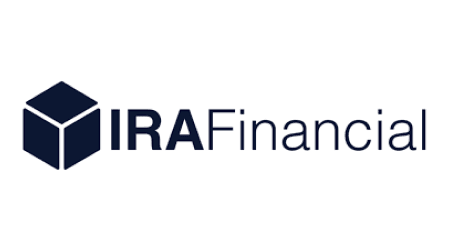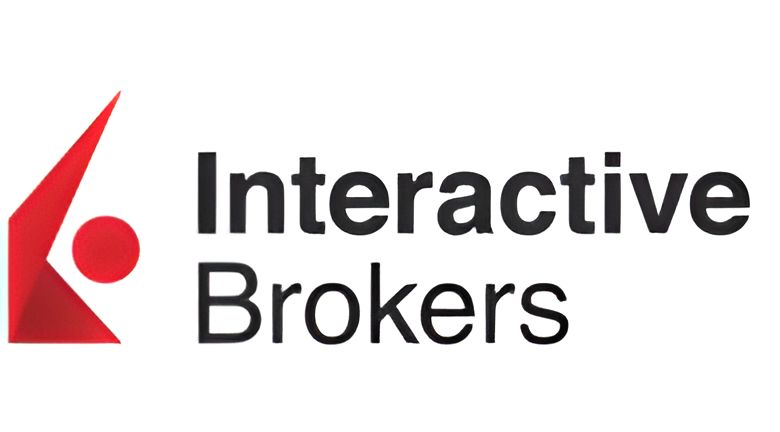-
Commitment to our readers
18 years
Helping you save money
Reviewed
by experts
Cited by
major publications
Finder maintains full editorial independence to ensure for our readers a fair assessment of the products, brands, and services we write about. That independence helps us maintain our reader's trust, which is what keeps you coming back to our site. We uphold a rigorous editorial process that ensures what we write and publish is fair, accurate, and trustworthy — and not influenced by how we make money.
We're committed to empowering our readers to make sound and often unfamiliar financial decisions.
We break down and digest information information about a topic, product, brand or service to help our readers find what they're looking for — whether that's saving money, getting better rewards or simply learning something new — and cover any questions you might not have even thought of yet. We do this by leading with empathy, leaning on plain and conversational language that speaks directly, without speaking down.
Before you begin investing for retirement
Before you embark on your investment journey, there are a few pre-investing strategies that will help you get off on the right foot.
1. Pay off debt
It can be tough to save for retirement with debt eating away at your funds. If you’re juggling multiple debts, like credit cards, student loans and the like, consider paying down what you owe first before investing.
How? Explore the avalanche and snowball methods for paying down debt. Both can help make debt more manageable.
2. Save for a rainy day
An emergency fund acts as a financial safety net and can help cover unexpected expenses. If you don’t have an emergency fund, consider building one before you invest.
How? High-yield savings accounts are practical spots to tuck extra cash. Create a savings habit by setting up automated deposits into your savings account.
3. Start small
Even if you don’t have much at the outset, every little bit helps. And that’s because compound interest can have a powerful impact on your savings — so long as you give it time to work its magic.
How? Micro-investing is an investment strategy that lets you invest with spare change.
Starting a retirement fund
Having an account dedicated to retirement savings can be an empowering first move. But before you open an account, you’ll want to have a solid understanding of your account options. Your two best bets for starting a retirement fund are: a 401(k) or an individual retirement account (IRA).
401(k)s are tax-advantaged retirement accounts available exclusively through your employer. And if you don’t have access to a 401(k), look into an individual retirement account. IRAs are also tax-advantaged and can be opened with most online brokers.
1. Choose a broker
Picking a broker is an important step, as this will impact your ongoing investment experience. But the right broker for you largely hinges on your investment experience and savings goals. Here’s what you should consider when choosing a broker for your retirement:
- Available assets. Make sure the broker you’re interested in offers the investments you want. Some only specialize in one or two assets — others offer a wider selection.
- Fees. Stock commissions are largely a thing of the past, but you’ll still want to keep an eye out for management fees, transfer fees and trading costs for specialty investments, like mutual funds.
- Learning curve. If you’re brand new to investing, opt for a beginner-friendly platform with an intuitive user interface, like Robinhood or Public.
- Investor feedback. Check out your broker’s reputation on the Better Business Bureau, Trustpilot and Reddit. You’d be surprised what red flags you can discover from these reputable review sites.
- Research tools. If you’re interested in tracking your investments or potentially performing technical analysis, pick a broker with robust research tools, like Interactive Brokers.
- Mobile app. Plan to check in on your retirement fund while you’re on the go? Opt for a broker with a well-equipped mobile app.
Our top picks for brokerages with IRA accounts

- 1% match on IRA contributions and 401(k) rollovers
- $0 annual fee and no options contract fees
- Robo-advisor and financial planning sessions
- Access private credit, venture capital and other alternative asset funds

- Choose from a variety of self-directed retirement account options
- Invest in alternative assets like real estate, crypto, private businesses and more
- Take advantage of tax benefits to grow your retirement savings

- $0 commissions on stocks, ETFs and options
- Trade stocks, bonds, ETFs, mutual funds, options, futures & currencies in your IRA
- Beginner-friendly and advanced mobile trading platforms, with robust research tools
2. Open a brokerage account
Once you’ve settled on a broker, you’re ready to open an account. You can usually sign up from your broker’s website or mobile app. Here’s what to expect of the application process:
- Select your account type.
- Enter your personal information, including your full name, residential address, date of birth, phone number and Social Security number.
- Review the platform’s terms and conditions.
- Fund your account.
Establish your retirement goals
Before you start picking investments, there are two important pieces of information you’ll want to think about.
Determine your retirement age
When do you want to retire? Clarifying your retirement age can help you identify your timelines and investment strategy going forward. Many aim to retire in their 60s, but this is far from a hard-and-fast rule. Some retire early while others work well into their 70s. Consider your career trajectory and where you anticipate you’ll be later in life. This can help you home in on your ideal retirement age.
Determine your retirement number
With your retirement age in mind, you’ll next want to determine your retirement number: the amount of money you’ll need to comfortably retire. As a general rule of thumb, most retirees need about 80% of their pre-retirement salary annually to live comfortably.
Use our investment calculator to determine how much your money might grow and return over time, based on contribution frequency, rate of return and time horizon.
Investing for retirement: options
There are numerous investment options when saving for retirement. A diversified portfolio –– the collection of investments you hold –– will contain a healthy balance of different asset classes, potentially across one or more investment accounts.
| Investment vehicle | Description |
|---|---|
401(k) | This tax-advantaged investment account is only available through an employer and is subject to contribution limits. Employees can contribute to their 401(k) through automatic payroll withholding and some employers match employee contributions. |
IRA | |
ETFs | These exchange-traded funds contain baskets of investments, like stocks, bonds, currencies, commodities and precious metals. They can be bought and sold on a stock exchange. |
Index funds | These specialized funds track financial market indexes, like the S&P 500. Index funds can typically be purchased as an ETF or mutual fund. |
Mutual funds | Like ETFs, mutual funds contain baskets of investments, including stocks, bonds, currencies, commodities and more. Mutual funds are actively managed by a fund manager. |
Target date funds | These funds are designed to be held over an individual’s lifetime until retirement. Target date funds contain a mix of investments typically concentrated in high-growth assets that shift over time in favor of more stable, less risky investments towards retirement. |
Individual stocks | Publicly traded companies sell their stock on public exchanges in the form of shares. Each share represents one slice of ownership in the company. Investors buy and sell stocks through online brokers. |
Bonds | Bonds are essentially a loan agreement between a company or government entity and a group of investors. They are fixed-income investments with set terms that pay the principal investment plus interest upon maturity. |
Annuities | These contracts are sold by financial institutions and insurance companies to investors. Investors pay into the annuity during the accumulation phase and receive a lump sum or series of payments upon annuitization — which typically occurs in retirement. |
CDs | Certificates of deposit are financial products sold by banks with set terms and interest rates. Investors can purchase CDs to receive their principal investment plus interest when the CD matures. |
Precious metals IRAs | Specialty brokers offer precious metals IRAs to those who want to invest in gold, silver, platinum and the like. These IRAs are limited to precious metals investments and typically carry higher account minimums and fees than classic IRAs. |
Income-producing investments
Income-producing investments are investments that provide a consistent income stream in the form of dividends or interest payments. There are a few different ways to add income-producing investments to your portfolio, including:
- Dividends and dividend income funds. Funds and stocks that pay dividends pay their investors on a quarterly, semi-annual or annual basis.
- Closed-end funds. These funds pool investor assets to raise capital through an initial public offering (IPO). They trade on major exchanges like stocks and use increased leverage to amplify investor returns.
- Annuities. These investment products are designed to give back to investors upon annuitization, or a series of payments over a specified period of time.
- Real estate. There are multiple ways to invest in real estate, but purchasing property can serve as an ongoing revenue stream in the form of rental income.
- REITs. Real estate investment trusts pool investor funds to purchase and operate income properties. Like stocks, REITs pay dividends.
Are income-producing investments essential when investing for retirement?
Not necessarily. Income-producing investments serve an important purpose for many investors. But they’re not essential. Asher Rogovy, Chief Investment Officer of Magnifina tells Finder:
Ideally, an investment portfolio generates predictable income for retirement, but it's not strictly necessary. Instead, active investors could sell profitable assets to fund retirement expenses. But this requires discipline and most retirees would rather just relax.
Asher Rogovy
Chief Investment Officer of Magnifina
Asset allocation
Asset allocation is the way in which you divvy up your portfolio across different asset classes, like stocks, bonds and cash. Younger investors typically hold a greater concentration of high-risk, high-growth assets, like stocks. Older investors tend to favor safer, less risky investments, like bonds.
As you age, your asset allocation should generally shift more toward debt securities like bonds and include a smaller percentage of stocks.
Brandon Renfro
Certified Financial Planner
Of course, you can’t eliminate risk entirely — and you don’t want to. And that’s because a portfolio without the right balance of growth assets, like stocks, runs the risk of becoming too conservative. Renfro notes, “If your portfolio becomes too conservative, it could increase the risk that you deplete your savings in retirement.”
Even investors well into their 70s will want to continue to hold higher-risk investments — like stocks — in their portfolios.
| Age | % of stocks in portfolio | % of bonds in portfolio | % of cash & cash equivalents in portfolio |
|---|---|---|---|
20s & 30s | 80% – 90% | 10% – 20% | 0% |
40s | 70% – 80% | 20% – 30% | 0% |
50s | 60% – 70% | 30% – 40% | 0% |
60s | 50% – 60% | 40% – 50% | 0% – 10% |
70s+ | 30% – 50% | 50% – 60% | 0% – 20% |
Estate planning
An estate plan outlines what happens to your assets when you die. It may be an uncomfortable process — but it’s an integral part of retirement planning. Without an estate plan, the laws of your state will determine what happens to your assets.
The estate planning process may include establishing a will, taking out life insurance, naming an executor of your estate and appointing power of attorney. Estate planning can be a challenge to tackle on your own, so you may want to consider recruiting the help of a financial advisor, lawyer or accountant. They can help you take stock of your assets and establish your plan.
Compare providers to kickstart your retirement investing
Find the best retirement account for your unique savings goals.
Bottom line
Investing for retirement doesn’t need to be complicated. With a little planning and research, you’ll be well on your way to building that retirement nest egg. Explore your options by reading our in-depth retirement resources guide.
Frequently asked questions
What is the best way to invest your money for retirement?
The best way to invest your money for retirement depends on your goals, time horizon and risk tolerance.
What are 4 things about investing for retirement?
Before you begin investing for retirement, make sure you:
- First, take care of your debt and start an emergency fund
- Establish your retirement goals
- Choose a broker to open an retirement account that suits your goals
- Monitor your investments
More on investing

Best Stocks for Beginners With Little Money to Invest 2025: Invest With Just $1
These are the stocks to buy when you don’t have much to spend.
Read more…
What happens if a brokerage firm fails?
Here’s what happens to your securities if your brokerage fails, and how your assets are protected by SIPC and FDIC.
Read more…
Treasury Bills: What They Are and How to Buy Them
Treasury Bills are fixed-income assets with maturities of less than one year. Here’s what to know before investing.
Read more…Ask a question
More guides on Finder
-
Top IRA Match Accounts for 2025: Boost Your Retirement Today
Get up to a 3% IRA match with Robinhood and Acorns or up to a 1% IRA match with SoFi. See how to qualify here.
-
5 Best SEP IRA Providers of 2025
Explore the pros and cons of the best SEP IRAs and learn how to open one of these accounts.
-
7 Best Rollover IRA Accounts of 2025
Explore the advantages and shortcomings of the best rollover IRAs for beginners, mobile trading, advanced traders and more.
-
Best retirement plans of 2025
Review the best retirement plans in 2025, from employer-offered to individually opened to retirement plans for small business owners.
-
403(b) vs. Roth IRA: How do they compare?
Compare the key differences in contribution limits, tax advantages and investment options between 403(b)s and Roth IRAs.
-
7 types of IRAs: Which is right for you?
Learn about the different types of IRAs and which is right for you.
-
2025’s Top 10 Roth IRAs: Best Picks to Build Your Retirement Savings
Check out our picks of the best Roth IRA accounts for beginners, options traders, hands-off investors and more.
-
10 Best IRA Accounts for 2025: Top Retirement Picks
Check out our picks of the best IRA accounts for beginners, options traders, hands-off investors and more.
-
How to start a solo 401(k)
A retirement plan for self-employed individuals but may come with high administrative fees.
-
Goldco Review 2025: Pros and Cons
Pros and cons to consider before you sign up for a Goldco precious metals IRA.


